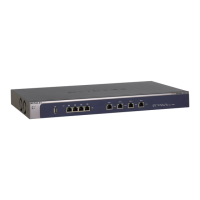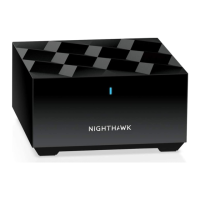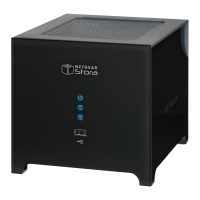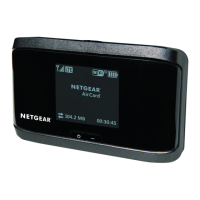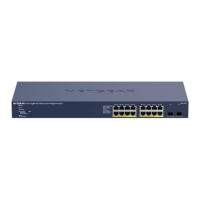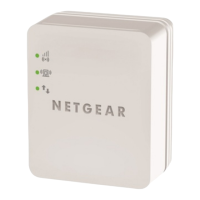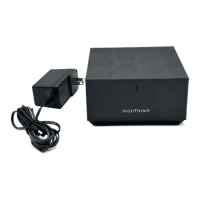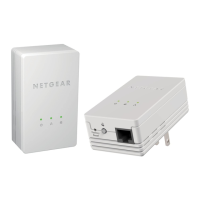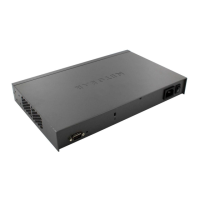Firewall Protection
127
ProSecure Unified Threat Management (UTM) Appliance
Note: The UTM always blocks denial of service (DoS) attacks. A DoS
attack does not attempt to steal data or damage your PCs, but
overloads your Internet connection so you cannot use it (that is, the
service becomes unavailable).
Note: When the Block TCP Flood and Block UDP Flood check boxes are
selected on the Attack Checks screen (see Attack Checks, VPN
Pass-through, and Multicast Pass-through on page 146), multiple
concurrent connections of the same application from one host or IP
address (such as multiple DNS queries from one PC) trigger the
UTM’s DoS protection.
Note: For more information about protecting the UTM from incoming
threats, see Use the Intrusion Prevention System on page 172.
The following table describes the fields that define the rules for inbound traffic and that are
common to most Inbound Service screens (see Figure 67 on page 133, Figure 70 on
page 136, and Figure 73 on page 138).
The steps to configure inbound rules are described in the following sections:
• Set LAN WAN Rules
• Set DMZ WAN Rules
• Set LAN DMZ Rules
Table 28. Inbound rules overview
Setting Description
Service The service or application to be covered by this rule. If the service or application does not
display in the list, you need to define it using the Services screen (see Add Customized
Services on page 152).
Action The action for outgoing connections covered by this rule:
• BLOCK always
• BLOCK by schedule, otherwise allow
• ALLOW always
• ALLOW by schedule, otherwise block
Note: Any inbound traffic that is not blocked by rules you create is allowed by the default
rule.
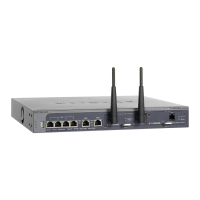
